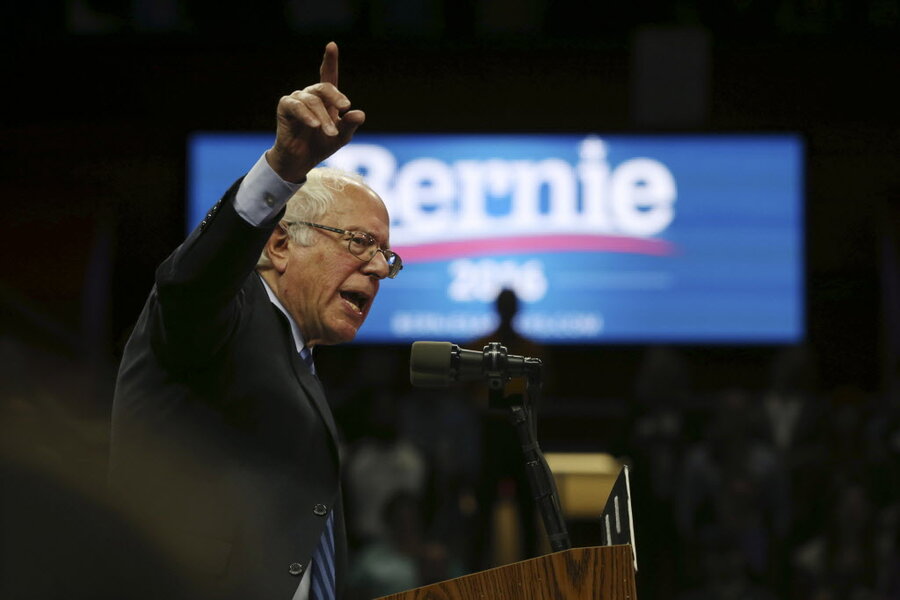How much would Sanders's domestic program add to the debt?
Loading...
Most American families would receive new government benefits that would exceed their higher taxes under the domestic policy agenda of Democratic Presidential hopeful Bernie Sanders. But even though Sanders would raise taxes on nearly all households by a total of more than $15 trillion over the next decade, his plan still would add an additional $18 trillion (plus at least $3 trillion in interest) to the national debt over the period—an unprecedented increase in government borrowing.
After the Tax Policy Center estimated in March that Sanders would raise taxes across all income levels, his advocates complained that TPC and others were ignoring the senator’s ambitious new spending plans. They argued that when you include those proposals, such as free health care and college education, more generous Social Security benefits, and 12 weeks of family leave, most Americans would be better off than they are today-- even if they’d pay higher taxes.
So with the help of the Urban Institute’s Health Policy Center (HPC) and Income and Benefits Policy Center (IBP), TPC has estimated the net effect of Sanders’s tax and spending plan. This collaborative analysis found that Sanders is mostly right: For 95 percent of households, his plan would increase average government benefits by more than it would raise their average tax bill. And the changes would be highly progressive. Low- and moderate-income households would see a positive net benefit, on average, while the highest-income 5 percent would pay substantially more in taxes than they’d receive in new government transfers.
But…. And there is a very big but. The analysis found that Sanders’s $15 trillion tax increase would pay for less than half the cost of his proposed new spending. Even with tax increases of a magnitude not seen since World War II, Sanders’s domestic agenda would still add $18 trillion to the national debt over 10 years—plus at least another $3 trillion interest costs. Nearly all of that increase would be due to his Medicare-for-all health plan.
HPC estimated his health proposal would increase federal medical spending by $32 trillion over 10 years, including $2.9 trillion in additional long-term care costs.
While there is some uncertainty about details of the Sanders health plan, his campaign is clear that both medical care and long-term care would be free to consumers, with no premiums, co-pays, or co-insurance. This would be far more generous than the current Medicare program, which is funded by a combination of taxes and premiums and also requires consumers to pay significant out-of-pocket costs.
In addition, many consumers choose to purchase Medicare supplemental (Medigap) insurance, many employers provide health insurance and some enhance Medicare coverage, and states contribute funds on behalf of low-income beneficiaries. Sanders would also include long-term care benefits, which Medicare currently does not provide (though Medicaid does finance these supports and services for the poor).
As a result of Sanders’s overall domestic policy agenda, the lowest income households would pay about $200 more in taxes on average in 2017, but receive about $10,000 more in benefits—almost triple their total adjusted gross income. . Middle-income households would pay an average of about $4,500 more in taxes and receive $13,000 more in government transfers, for a net benefit of about $8,500. By contrast, the highest income 5 percent of households would pay $130,000 more in taxes on average and receive about $19,000 in additional transfers, resulting in a net cost of $111,000.
The scope of Sanders’s new spending initiatives would create an enormous fiscal challenge. The Congressional Budget Office projects the nation’s public debt will approach $24 trillion in a decade. Even if Sanders could convince Congress to enact $15 trillion in new taxes, his plan would boost that debt to the dangerously high level of $42 trillion, plus another $3 trillion in interest costs.
Where else could Sanders get the money? He’s unlikely to cut other domestic spending, and totally eliminating the defense budget would get him only one-third of what he needs. Raising taxes by an additional $18 trillion would be both politically inconceivable and economically risky.
Two important caveats: The three Urban centers used different models to make these estimates. While TPC attempted to reconcile these projections, they are less precise than if they were developed by a single, unified model. In addition, Urban did not model all of Sanders’s spending proposals. Among those excluded: a $1 trillion public infrastructure program and a $5.5 billion youth jobs program.
Still, the basic story of Bernie Sanders’s domestic policy agenda is clear: It would provide a net benefit to most households, but only if he can somehow figure out how to pay for it.
This article first appeared at TaxVox.





